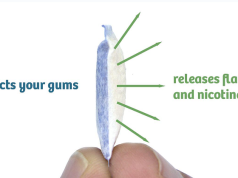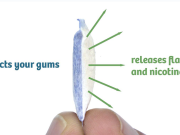
According to Imperial Tobacco, iQOS should be subject to the same rules as regular cigarettes in public spaces
We recently addressed in these columns the critiques of Imperial Tobacco against heated tobacco solutions (i.e. HNB cigarettes), especially the iQOS developed by its competitor, Philip Morris.
The Imperial Tobacco research team leaded by John D. Prichard applied a novel analytical approach for air-quality measurements, the Proton Transfer Reaction-Mass spectrometry (PTR-MS), and submitted to their tests three different smoke-free products including their own e-cigarette product (Blu), the Nicorette inhalator and the concurrent iQOS tobacco heater equipped with a Marlboro HeatStick [1].
The authors conclude that their simple method showed a potential side-stream of harmful compounds from the IQOS/Marlboro HeatStick. They warrant further investigation with regard to the use of such devices and call the public health authorities to consider tobacco heated products as a potentiel thread for bystanders.
But what is their “simple method” and what is a side-stream?

The authors set up what they call a capture chamber, a closed plastic box of roughly 0.5 US Gal (1.7 L) in which the targeted device is placed. The side-stream flux defined as the emission from the device that remains in the box, and is opposed to the main stream that is inhaled by the user.
Compared to the detection of VOCs by gas chromatography (GC) that requires a certain amount fo time (over minutes), PTR-MS method offers a high frequency response (typically 10 Hz) that made it suitable for use in experimental scientific flights by NOAA [2]. In addition to this high resolution, PTR-MS offers high sentitivity measurements of VOCs. But it suffers from limitations and a major limitation is that it characterizes compounds only via their mass. And a qualitative analysis is only achieved through careful calibration procedures and the combination with GC, as described by IONICON, the manufacturer.
Is it of any scientific interest?
Upon analysis, the instrument returns spectra, as those provided by the authors on Figure 2, where the Y-axis is a dimensionless ratio and the X-axis not fully representative of a single compound because of (little) ionization-induced fragmentation. With respect to the qualitative aspect, only two VOCs were identified by the authors: Acetylene and Nicotine.
And yet, the same team has proven more analytical performance in the field of air analysis, VOC detection and modeling. They have combined PTR-MS and GC to achieve Nicotine measurements at a very low level (1.8 ppb to 1.8 ppm) in exhaled breath [3] and demonstrated their ability to discriminate and quantify over 19 VOCs [4]. The team even attempted a 1D numerical model approach [5] to describe the potential exposure to nicotine or any single compound to bystanders, which is a promising tool for public health safety.
Why publishing a fuzzy short communication when a scientific article would be more pertinent?
The researchers point out that public health authorities do not tolerate any minimum threshold for exposure to emissions of tobacco products. Therefore, they recommend the use of tobacco heated products in public areas to be subjected to the same rules as cigarettes.
In the domain of reduced risk products, the British tobacco company Imperial has turned its back to the heated tobacco technology and actively promotes e-cigarette’s development. Part of its commercial speech relies on the innocuousness of the e-cigarette and the company argues for their use in enclosed public spaces.
Since this paper is a short comment, we expect that it is only the visible face of the iceberg that will soon come in a more detailed publication showing more pertinent information than non-qualitative and non-quantitative data supporting politically-oriented conclusions instead of scientific concerns.
[1] O’Connell G, Wilkinson P, Burseg KMM, Stotesbury SJ, Pritchard JD (2015) Heated Tobacco Products Create Side-Stream Emissions: Implications for Regulation. J Environ Anal Chem, 2: 163.
[2] de Gouw, J. A., and C. Warneke (2007), Measurements of volatile organic compounds in the earths atmosphere using proton-transfer-reaction mass spectrometry, Mass Spectrometry Reviews, 26(2), 223-257.
[3] O’Connell, G., Colard, S., Breiev, K., Sulzer, P., & Biel, S. S. (2015). An Experimental Method to Determine the Concentration of Nicotine in Exhaled Breath and its Retention Rate Following Use of an Electronic Cigarette. J Environ Anal Chem, 2(161), 2380-2391.
[4] O’Connell, G., Colard, S., Cahours, X., & Pritchard, J. D. (2015). An Assessment of Indoor Air Quality before, during and after Unrestricted Use of E-Cigarettes in a Small Room. International journal of environmental research and public health, 12(5), 4889-4907.
[5] Colard, S., O’Connell, G., Verron, T., Cahours, X., & Pritchard, J. D. (2014). Electronic cigarettes and indoor air quality: A simple approach to modeling potential bystander exposures to nicotine. International journal of environmental research and public health, 12(1), 282-299.
All you need to know about iQOS and Heat-Not-Burn products:












wher can i get in malaysia